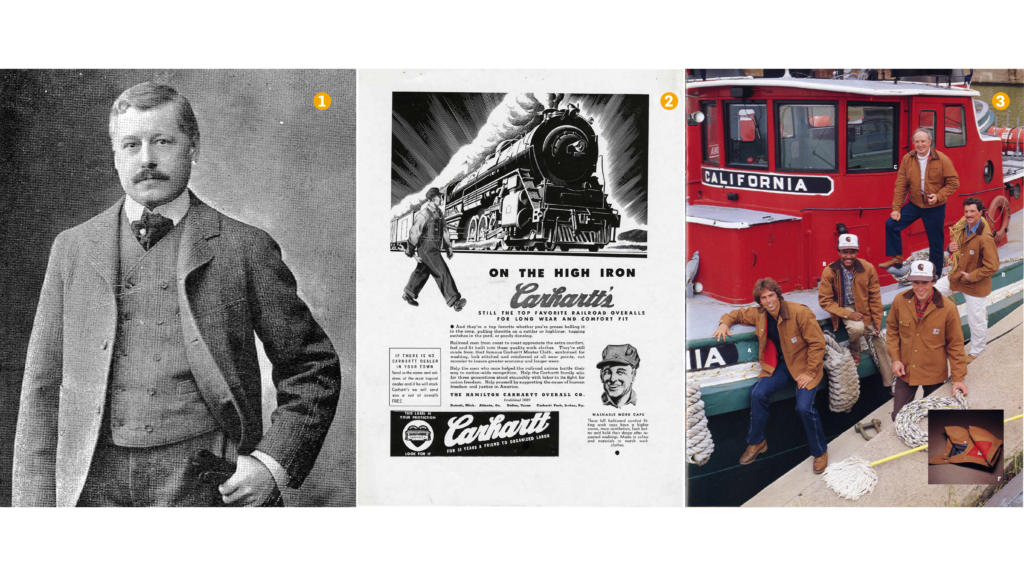In the summer of 1993, readers of the Los Angeles Times opened their papers to a startling bit of news—and for once it wasn’t about wildfires, mudslides or Michael Jackson. “Work clothes worn by dad and other unhip people are now all the rage among some youths,” ran the headline. And while the story mentioned the likes of Sears and Kmart, it was mostly about Carhartt.
For good reason, too. In the preceding two years, hip-hop performers including Dr. Dre and Snow had donned the brand for their music videos. Kiddie rappers Kris Kross rolled up to the American Music Awards in Carhartt. And no less an authority than Vogue magazine told its readers that Carhartt was suddenly the “hottest label.”
The workwear brand has held onto its pop culture fame ever since, and if that’s a surprise to some, Todd Corley isn’t among them. As Carhartt’s senior vice president of inclusion, sustainability and community, Corley has an innate sense of the brand’s substance and, by extension, its allure. In his view, artists have embraced Carhartt today for the same reasons that working-class men did a century before: “The hip-hop community’s value of hard work is no different than the person who’s a lumberjack.”
It’s rare for any brand to draw as many rebels, rappers and street kids as it does hunters, miners and farmers. That Carhartt’s done it is down to more than being an unlikely fashion statement. Unapologetically functional, Carhartt duds are also nearly indestructible—just as they were designed to be.
In 1889, Hamilton Carhartt was a traveling salesman hawking watches, belts and other men’s furnishings. Riding the Michigan Central between sales calls, though, he’d stumble across his true calling.
“He was striking up conversations with railroad workers, asking where their [clothing] was falling short,” said company archivist Dave Moore. “It wasn’t durable enough. It didn’t last long enough. It didn’t have the right pocketing to serve them in their jobs.”
Determined to supply the laborers with the gear they wanted, Carhartt rented a loft with two sewing machines and began making overalls, which soon expanded to shirts, pants and jackets. “Honest value for an honest dollar” was the Carhartt brand promise, and the customers came.
Today, two signature items—the Chore Coat and the bib—are essentially unchanged from a century ago. Carhartt never lost its base of blue-collar customers, who buy the clothing strictly for performance reasons. But the brand’s long history is another part of why many other demographics have embraced it.
“The authenticity and heritage have allowed us to continue to appeal to ever-younger consumers,” Moore said. “You’re putting something on your back with a story behind it.”
Brass instruments

Brands from Calvin Klein to Levi’s to Chanel have long stamped their names on buttons for an added bit of branding. Carhartt, however, has elevated brass to an art form. A riff on the company name, buttons featured a railroad coach nested in a heart. (Car + heart, get it?) “The famous car and heart buttons on Carhartt overalls are used to protect the buyer from any substitution,” founder Hamilton Carhartt once said. Variations of the emblem served the company from its founding until the early 1960s, after which the brand name appeared.
Second time around

There are few better ways to demonstrate a clothing brand’s longevity than to sell used items two, six or even 10 years old that still have years of wear left in them. This is what Carhartt began doing last March with the launch of its Reworked program. In exchange for store credit, consumers can mail in Carhartt jackets ($25 trade-in value), overalls ($20), pants ($10) and other items. While the primary objective is to keep clothing out of landfills, Corley said there’s marketing value in drawing budget-conscious customers who might otherwise have never come to the brand. “It helps the environment,” he said, “but a big driver is introducing to others who we are.”
Tough customers

Before manufacturing his first pair of overalls, company founder Hamilton Carhartt (1) asked railroad workers what they wanted to see. So when the brand advertised to those men (2), it knew how to speak their language. Even as Carhartt clothing found a broader following, it never forgot its core customers—like the tugboat crew in this 1983 ad (3).









